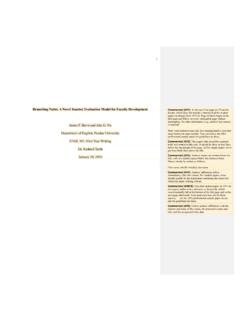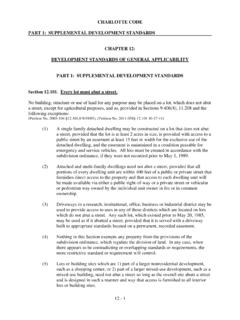Transcription of Race Reporting Guide - Race Forward
1 Race Reporting Guide A RACE Forward MEDIA REFERENCE Guidelines for covering key issues with a racial lens Reporting on specific racial and ethnic groups Harmful racial discourse practices to avoid Key terms and concepts Online resources 2015 Version Race Forward June 2015 Acknowledgements Thank you to W. K. Kellogg Foundation for their generous support of Race Forward s work. This Guide is used by Race Forward and Colorlines. Race Forward s Race Reporting Guide Guide will be regularly updated and is available online at: For more information, contact YORK 32 Broadway, Suite 1801 New York, NY 10004 p / f 900 Alice Street, Suite 400 Oakland, CA 94607 p / f RACEFORWARD IntroductionWhen we talk about education, health care, voting rights, and many other topics, there is often an aversion to talking about race.
2 Though some suggest we are post-racial, we find that race still plays a defining role in a person s life trajectory, experiences, and outcomes. In addition, shifting demographics make even more urgent our need to speak openly about racial bias and inequity, and their deep roots in our history, culture, and institu-tions. This system of racialization which routinely confers advantage and disadvantage based on skin color and other characteristics must be clearly understood. However, when race enters our public conversations about these important national issues, the dialogue is too often dehumanizing and racially charged. Language matters, and we need more tools to move our race conversations Forward in more accurate, fair, and productive ways.
3 Race Forward s Race Reporting Guide aims to provide crit-ical support for the use of responsible language and story fram-ing that reflects ethical and rigorous journalistic standards and affirms the dignity and human rights of people of all races. For over 30 years, Race Forward has been teaching and writing about race. We publish the award-winning daily news site Colorlines, conduct original research on pressing racial justice issues, present the biennial Facing Race National Conference, and iprovide training and consulting services. One of our recent re-ports, Moving the Race Conversation Forward , revealed key findings and recommendations on how mainstream can address racial issues to reshape and reform the way we talk about race and racism in our country.
4 It found that most coverage of race and racism is not systemically aware, meaning that it focus-es on racism at the level of the individual, dismisses systemic racism, or refers to racism in the past tense. This kind of report-ing leaves out important contextual information such as the role of history, institutional policies, and inequitable practices, and it rarely features prominent, robust coverage of racial justice advocacy or purpose of this race Reporting Guide is to serve as an acces-sible and concise tool for journalists and thought leaders in the United States talking about race, racism, and racial justice in the media. It aims to provide context and guidelines to inform Reporting and language, and to encourage more conversation and understanding.
5 Language is ever-evolving, so this is not meant to be comprehensive, or to reflect all perspectives and important thinking that has been done on these issues. Questions and suggestions related to this Guide are welcome, and we invite journalists and media-makers to consider Race Forward a resource in story-development, experts available, and talking about race in the media. Contact us at Language matters, and we need more tools to move our race conversations Forward in more accurate, fair, and productive ways. iiTHE Guide INCLUDES:Covering Key Issues With a Racial LensSeven Harmful Racial Discourse Practices Key Terms & ConceptsOnline Resources AppendixTHE Guide INCLUDES:1193135 36 Covering Key Issues With a Racial Lens It is critical that media coverage on race bring an explicit racial lens to breaking news, investigative Reporting , and multimedia storytelling.
6 This means that Reporting on subjects impacted by race should include a component that looks at systems, not just individuals. A systemic analysis means we examine the root causes and mechanisms that feed into patterns. It makes for good journalism and opens up new avenues of inquiry and storytelling. This section highlights pressing, and often under- reported, issues that disparately impact people of color, and provides tips and guidelines to help avoid pitfalls often found in media KEY ISSUES1 GENERAL Reporting TIPS Be explicit about race. Avoid stereotypes. Use a multiracial lens, and consider all communities of color. Investigate issues from a systemic ( Is there an institution or a practice at work that has race-based consequences?)
7 Over an individual ( Is this person a racist? ) perspective. Focus on actions and impacts, rather than attitudes and intentions. Place the humanity and leadership of people of color at the center. Feature prominent, robust coverage of racial justice advocacy and solutions. Ensure headlines, images, captions, and graphics are fair and responsible in their depiction of people of color, and coverage of the issues. Give proper credit to the owner/creator of the media you are sharing, and request permission when TIPS:CHANGING DEMOGRAPHICS & MILLENNIALS Familiarize yourself with changing racial and ethnic demo-graphics in the geographic areas you re covering, and report with them in mind.
8 By 2044, the United States is projected to be a plurality nation, as no race or ethnic group is projected to have greater than a 50 percent share of the nation s total. Beware of using terms like majority-minority as they do not give a nuanced or accurate picture of the demograph-ic changes occurring in a particular community. Instead describe the change, with figures and a sense of how things have changed over time and why. The Millennial Generation (born 1981-1993) is the largest, most racially and ethnically diverse generation the has ever known. The fastest growing racial groups are Two or More Races, (expected to triple in size by 2060), Asian population, and Hispanic population (expected to comprise 29% of the United States population by 2060).
9 More than half the growth in total population of the be-tween 2000 and 2010 was due to the increase in the Hispanic population. (continued on following page) 3 There were million unauthorized immigrants in the as of 2012. In 2014, of the population was foreign-born, with a rate of growth expected to account for an increasing share of the total population, reaching 19 percent in 2060. The federal government is considering allowing those of Middle Eastern and North African descent (MENA) to identify as such on 2020 Census (previously classified as White by default). ONLINE RESOURCESSee Race Forward s reports on Millennials JUSTICEKEY ISSUES #BlackLivesMatter, racial profiling, mass incarceration, drug pol-icy reform, torture, wrongful conviction, grand jury, police shoot-ings, community protests, for-profit prisons, racial disparities.
10 ONLINE RESOURCESSee Colorlines coverage of criminal justice IMPORTANT GUIDELINES Don t take police reports at face value. Move beyond presenting disparities ( Black babies are still almost times more likely to die before reaching their 1st birthday) and investigate the systemic reasons that influence those disparities, locally and nationally. Avoid sensational headlines and COPS -like news coverage that dehumanizes and exploits racial stereotypes ( Black-on-Black crime is no more a phenomenon than White-on-White crime ). Identify people as those who have done something, not as a person who is identified only by the acts he or she has committed. For example, instead of ex-felon, use formerly incarcerated person, returning citizen, or person with a criminal record.





